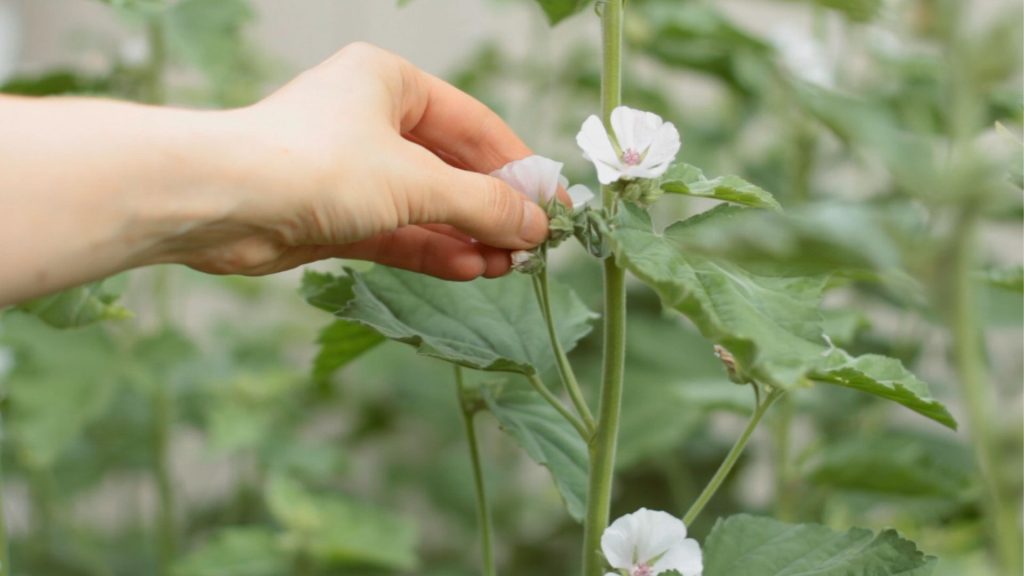What if we tell you that marshmallows can be grown in your garden without any problems? But not the sweet chubby candy you could think about, but healthy and pretty plants. The marshmallow bush is cultivated in many countries on an industrial scale, used in landscape design and, of course, would be appropriate in the pharmaceutical garden. Today we want to tell you how to grow marshmallows and how it is good for health.
What Is a Marshmallow Plant?
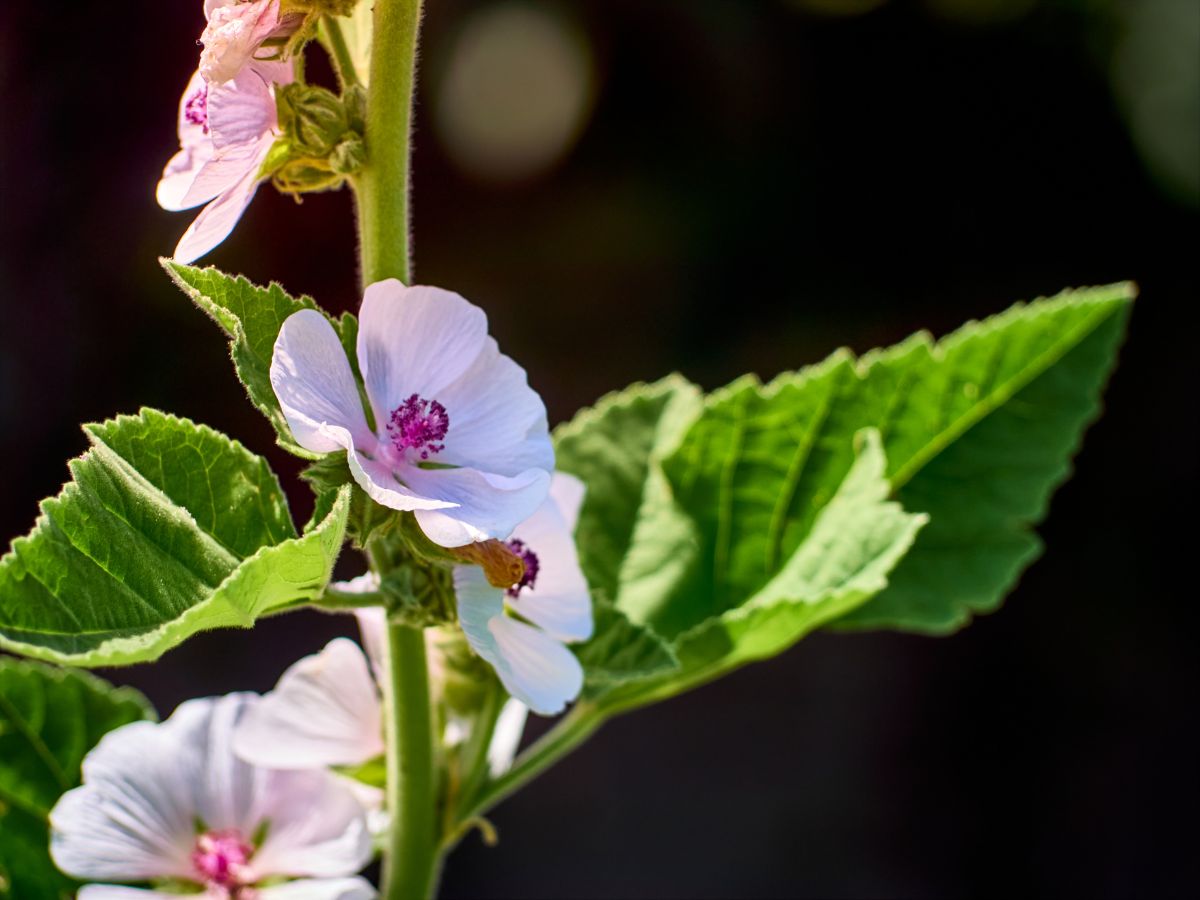
Marshmallow (Althaea plant) is a medicinal herbaceous perennial plant of the Malvaceae family. Its healing properties have been known to people since ancient times. Once upon a time it was cooked and eaten as a vegetable by the Egyptians, Romans, and Greeks. Moreover, as mentioned in the Bible, this plant was eaten during the famine. The Althaea is also very beautiful and blooms with light cream flowers.
What Does a Marshmallow Plant Look Like?
The plant is large, up to 6 ft high. It is distinguished by a single stem. Not prone to branching. It is characterized by a short, multi-headed rhizome and abundantly growing lateral roots. Flowers 1-2in in diameter grow on short pedicels, located in the axils of the middle and upper leaves. The corolla is pink, while the petals of the marshmallow flower are tinted in pale pink or white.
Where Do Marshmallow Plants Grow?
The wild marshmallow plant is found in Europe and Asia and is also cultivated by enterprises specializing in the cultivation of medicinal plants. Plants are also easy to cultivate in the garden.
Marshmallow Plant Growing
The marshmallow plant, also known as Althaea officinalis, is a perennial herb that is native to Europe, Africa, and Asia. It is commonly grown for its root, which is used to produce marshmallow candy, as well as for medicinal purposes. Here are some tips for growing marshmallow plants:
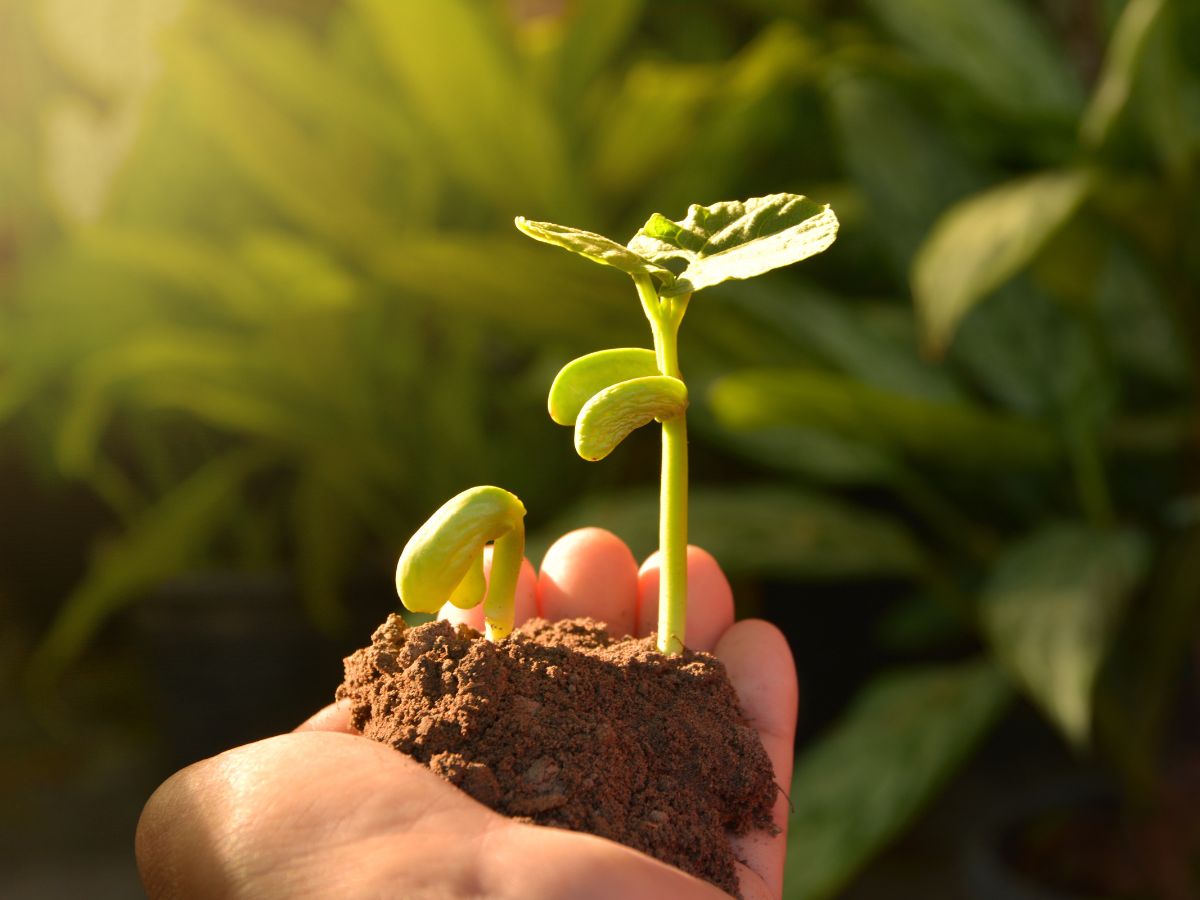
Planting
Marshmallow plants prefer full sun to partial shade and well-drained soil that is rich in organic matter. It’s best to plant marshmallow seeds in the spring or fall, or you can propagate the plants by taking cuttings in the summer. If planting from seed, it’s best to start the seeds indoors about 6-8 weeks before the last frost date in your area. Once the seedlings have grown to about 2 inches tall, you can transplant them into the garden. Marshmallow plants should be spaced about 2 feet apart to give them enough room to grow.
If propagating from cuttings, select a healthy, mature plant and cut a 4-6 inch stem from the top of the plant. Remove the leaves from the bottom 2 inches of the stem, and then plant the cutting in a pot filled with a mixture of perlite and potting soil. Keep the soil moist and place the pot in a warm, bright location until the cutting has rooted, usually in about 2-3 weeks. Once the cutting has rooted, you can transplant it into the garden.
Watering
Marshmallow plants prefer moist soil, so it’s important to water them regularly, especially during hot, dry weather. The plants should be watered deeply once a week, or more frequently if the soil is dry. Be sure not to over-water, as marshmallow plants are susceptible to root rot. Mulching around the base of the plants can help retain moisture and prevent the soil from drying out too quickly.
Fertilizing
Marshmallow plants benefit from regular fertilization with a balanced fertilizer, which will provide them with the nutrients they need to grow healthy and strong. Fertilize the plants once a month during the growing season, but be careful not to over-fertilize, as this can cause excessive leaf growth at the expense of the roots. Avoid fertilizing the plants in the fall, as this can cause them to produce new growth that will be damaged by frost.
Pruning
Marshmallow plants can grow up to 5 feet tall, so it’s important to prune them back to about 3 feet in the fall to prevent them from becoming too leggy. Pruning will also help the plant to produce more flowers and larger roots. To prune the plant, simply cut back the stems to about 3 feet in height, taking care not to cut into the main stem of the plant.
How to Propagation Marshmallow Plant?
You can easily propagate the marshmallow plant by seeds or using the root sections.
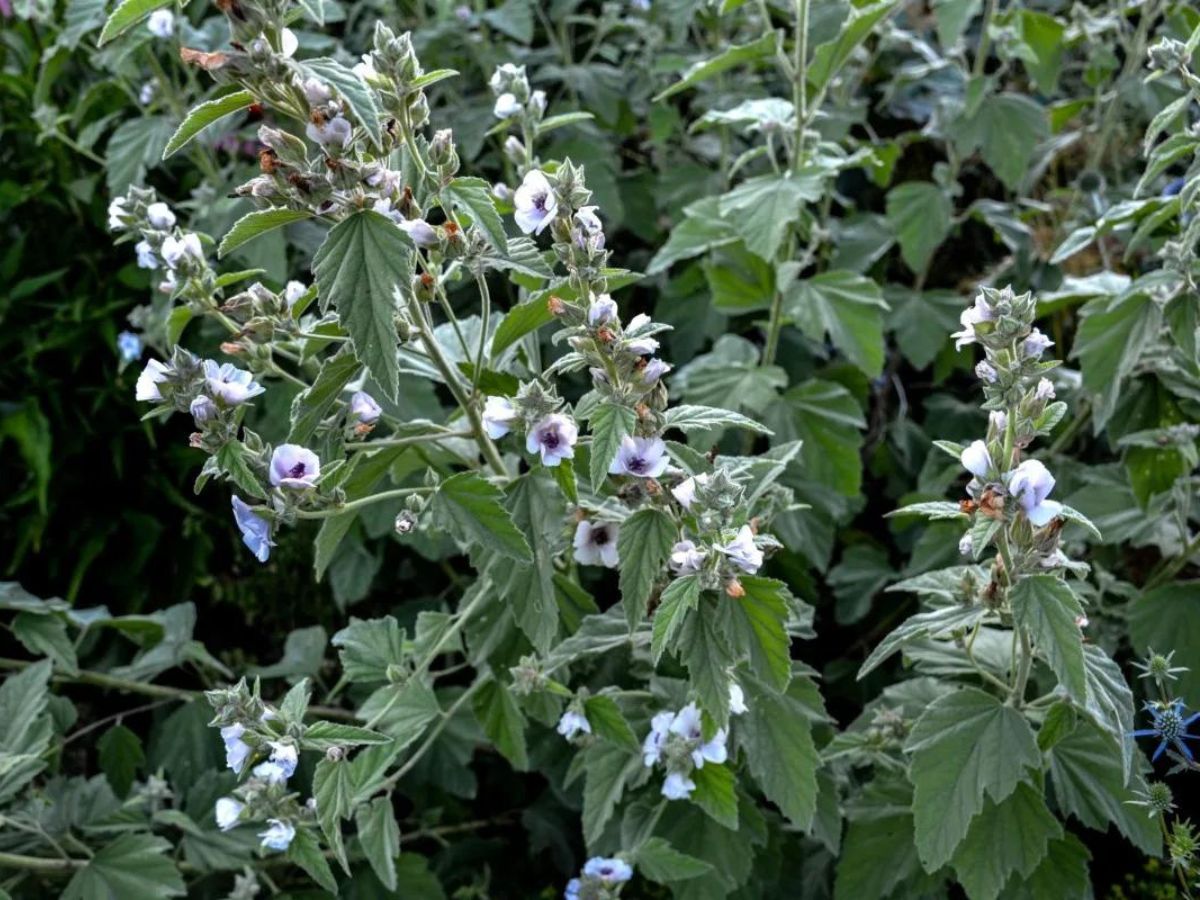
The marshmallow tree plant is propagated mainly by seeds, which are characterized by a long-dormant period. It is best to sow seeds before winter and apply scarification during spring sowing. Before sowing, it is advisable to soak them in warm water for several days. Plants bloom in the second or third year, and flowering lasts from June to September. When growing a plant on a personal plot, it must be borne in mind that marshmallows can grow up to 6-7in in height with good care.
Mature plants can also be propagated by dividing the rhizome. This breeding method may well be combined with the procurement of raw materials. Plants are dug up in spring or autumn, and the rhizomes remaining after harvesting are planted to a depth of 4-6 in.
Precautionary Measures
In general, the Althaea plant is safe to consume, but be sure to check with your doctor. The only thing is that the Althaea can interfere with the absorption of certain drugs. It is also not recommended consuming it 14-15 days before the planned operation, as it can increase the risk of bleeding. Marshmallows can also cause hypoglycemia. If you have been diagnosed with diabetes, also refrain from consuming marshmallows.
Benefit for Health of Marshmallow Plant
From time immemorial, it was believed that the root of the marshmallow has healing properties. For medicinal raw materials, a marshmallow root of 3, 2, and one year of age is used, which contains mineral salts, vitamins, pectins, fatty oils, more than 10% sugar, up to 37% starch, and up to 35% mucous substance. Due to the high content of starch and mucous substances, marshmallow root is used as an astringent for gastrointestinal disorders, in the treatment of the duodenum, gastric ulcer, pneumonia, whooping cough, bronchitis, gastritis, bronchial asthma, and in the treatment of catarrh of the upper respiratory tract.
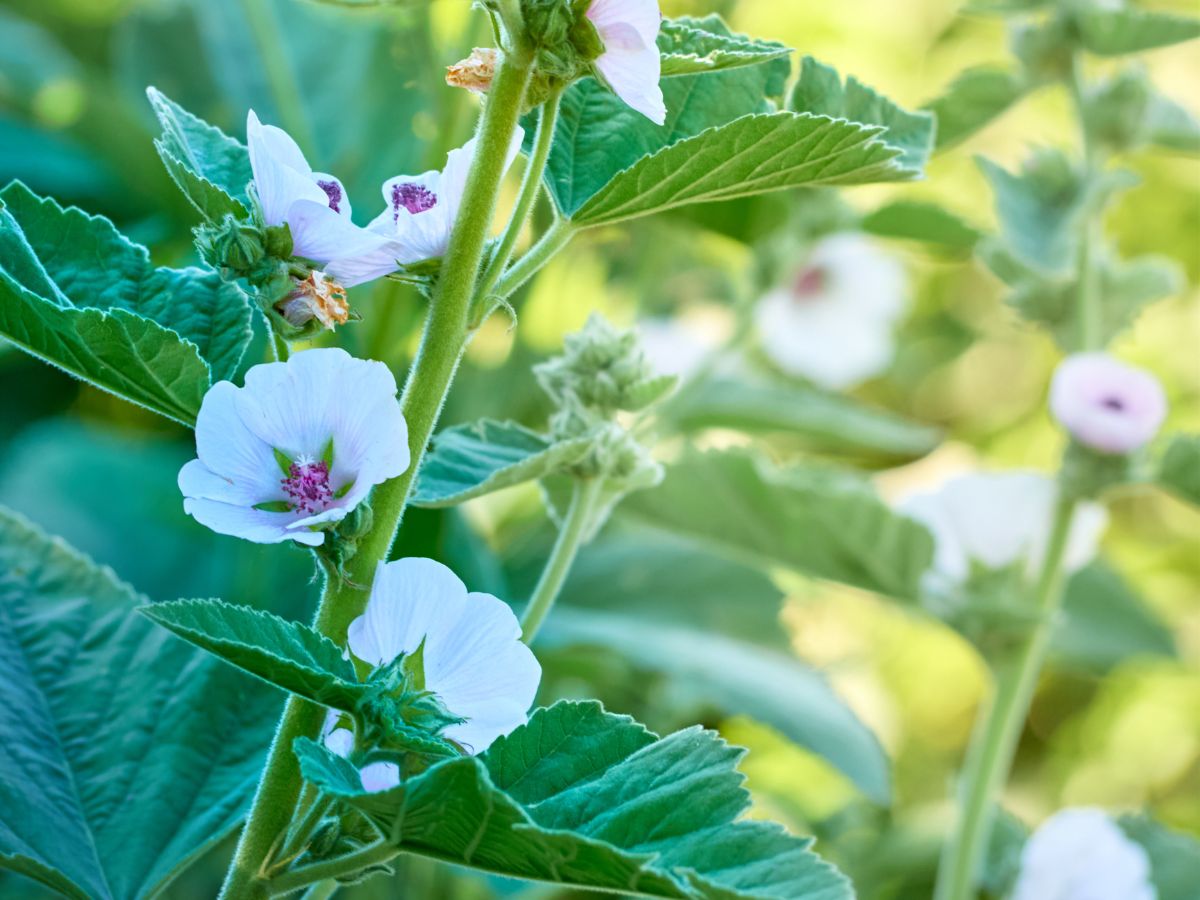
Althea flowers and leaves are also used as medicinal raw materials. Fresh marshmallow leaves can be consumed as a salad plant.
Everyone knows that aloe vera is a plant used for sunburn. Marshmallow root extract can also help with severe sunburn. One study has shown that an ointment containing 20% marshmallow root extract can reduce skin irritation. Consult your dermatologist in advance about using marshmallow root as a remedy for sunburn, eczema, or psoriasis.
Collecting Althea Marshmallow Plant Root
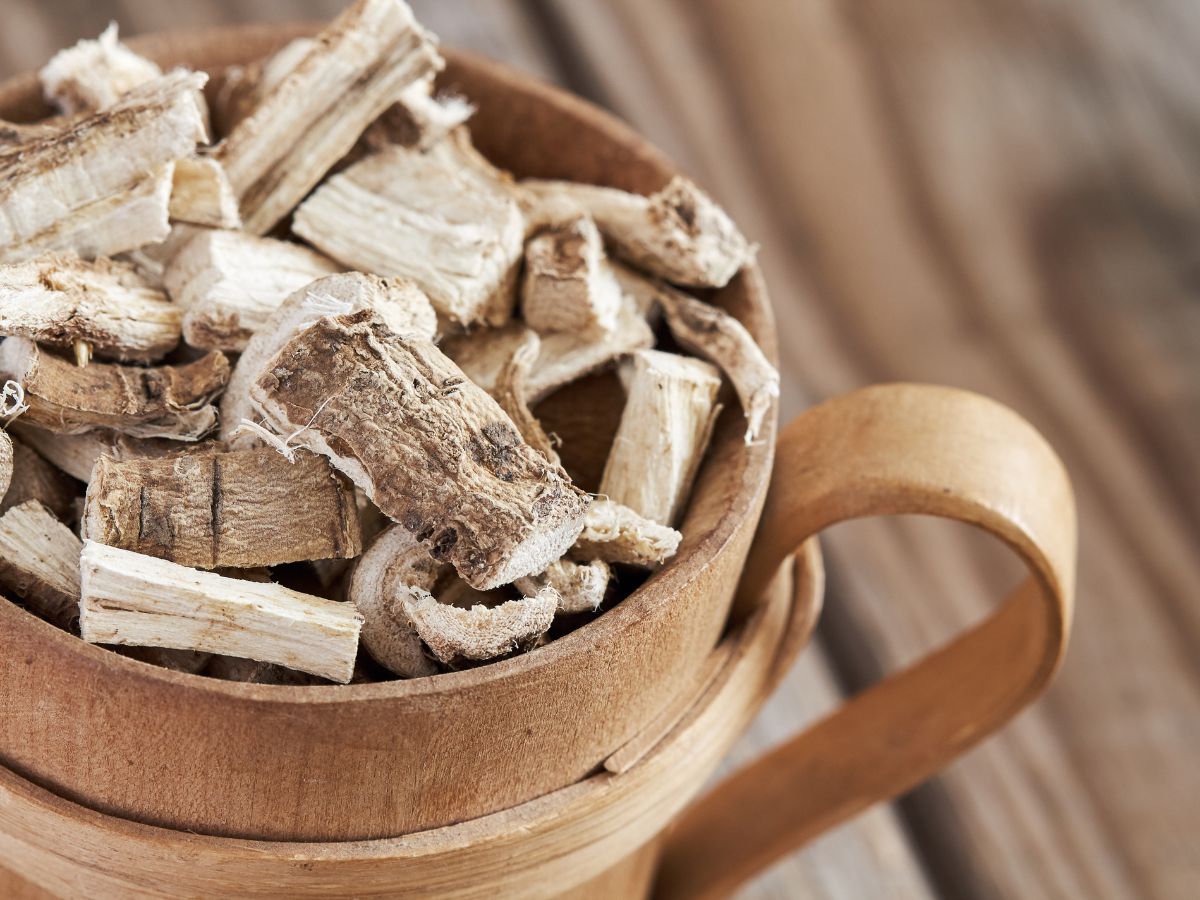
If your main goal was to plant marshmallows for medical use, then you can harvest as early as 2-3 autumn after planting. If you harvest in late fall, do it after the roots have died, but always before the ground freezes. Also, use a sharp shovel. If you do not want to lose the Althaea after harvest, take care of replanting the crown.
After you have collected the roots, they should be peeled, chopped, and dried. If you do not want to wait 2-3 years for the Althaea to grow, you can buy them in the online store.
FAQs
Can Marshmallow Roots Be Given to Children?
This is one of the most common remedies given to a child for respiratory diseases. Babies should take the drug with caution and consult a doctor.
Does Marshmallow Root Help with Weight Loss?
Starch, pectins, and a large amount of mucus (about 35%) are excellent for weight loss. Mucus can reduce appetite and prevent the absorption of fat after eating. Starch helps mucus and keeps the satiety effect.
Conclusion
Do not forget that marshmallows not only have medicinal properties but also look very impressive. The plant is characterized by pubescent grayish-green leaves and showy flowers. The Althaea looks good in various landscape compositions, can be planted in the background, and its tallness allows it to be used to decorate unsightly walls, fences, and other structures.


